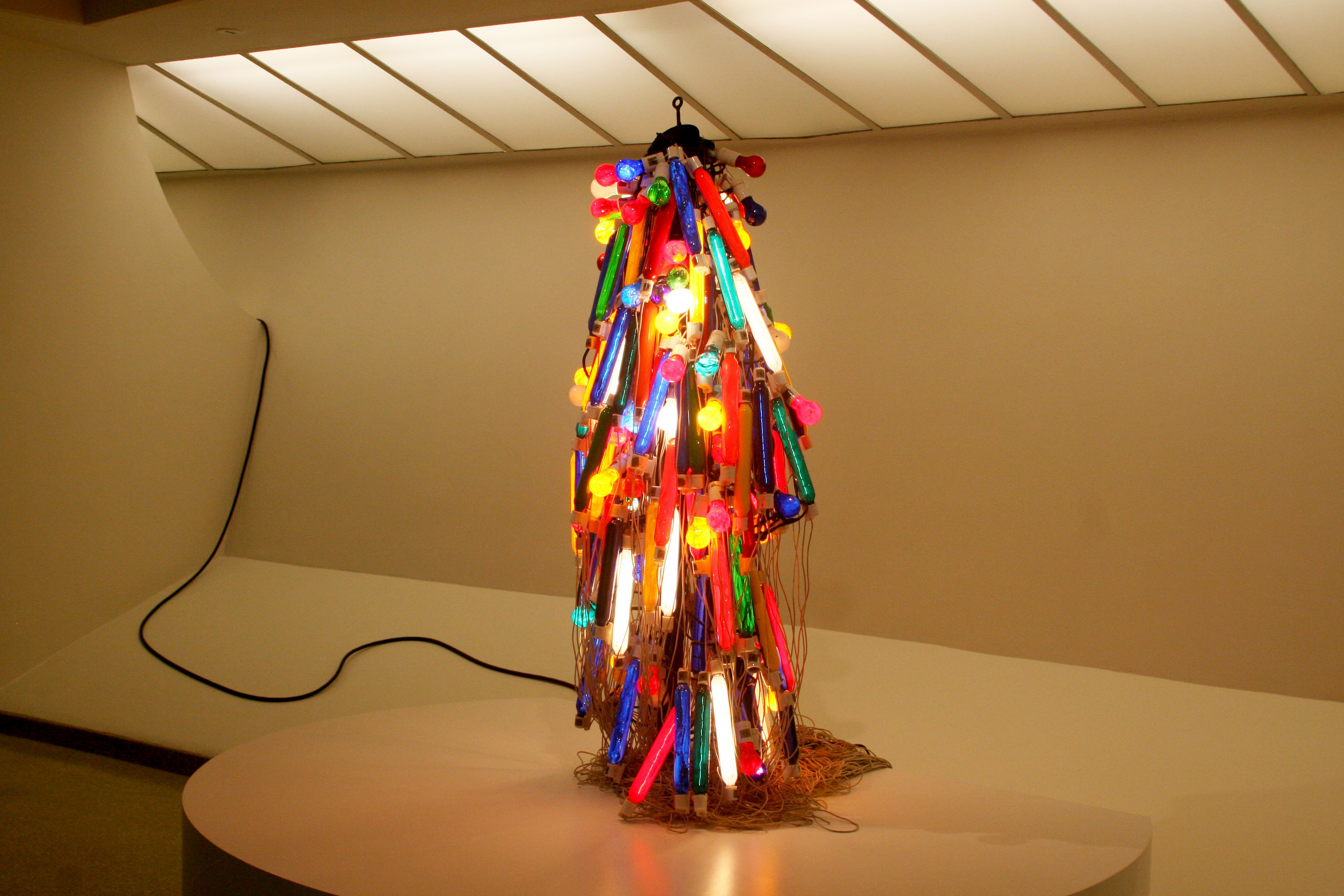By now, the looks, character and history of Gutai, the post-World War II Japanese art movement born in 1954 in Ashiya, between Osaka and Kobe, are familiar to regular viewers of modern-art exhibitions in Japan. Last summer's "Gutai: The Spirit of an Era," a survey of the movement's evolution and its participants' diverse accomplishments, which was shown at the National Art Center, Tokyo, was the largest presentation of its kind to date in Japan. Early last year, the Museum of Contemporary Art, Tokyo, also included some superb Gutai works in a show of abstract paintings; in 2011, it presented a solo exhibition of founding Gutai member Atsuko Tanaka's works.
Now, the Solomon R. Guggenheim Museum in New York has opened "Gutai: Splendid Playground." While last year's big Gutai exhibition in Tokyo focused on the creatively, even spiritually liberating effects the movement's approach to art-making had on its participants and paid attention to its hitherto overlooked last phase, the late 1960s through its demise in 1972, the Guggenheim's survey positions the ideas and achievements of the artists' group, whose self-imposed goal was to create what had never been created before, in a broader, international context of modern-art history.
Ming Tiampo, one of the exhibition’s co-curators, notes: "We show how Gutai was one of modern art's first 'transnational' movements, for its participants made a conscious effort to use the mass media to publicize their activities, to travel abroad and to establish dialogs with artists in other parts of the world." Tiampo, an associate professor of art history at Carleton University in Ottawa, is the author of "Gutai: Decentering Modernism" (University of Chicago Press, 2011). She co-organized the exhibition with Alexandra Munroe, the museum's senior curator of Asian art.

















With your current subscription plan you can comment on stories. However, before writing your first comment, please create a display name in the Profile section of your subscriber account page.